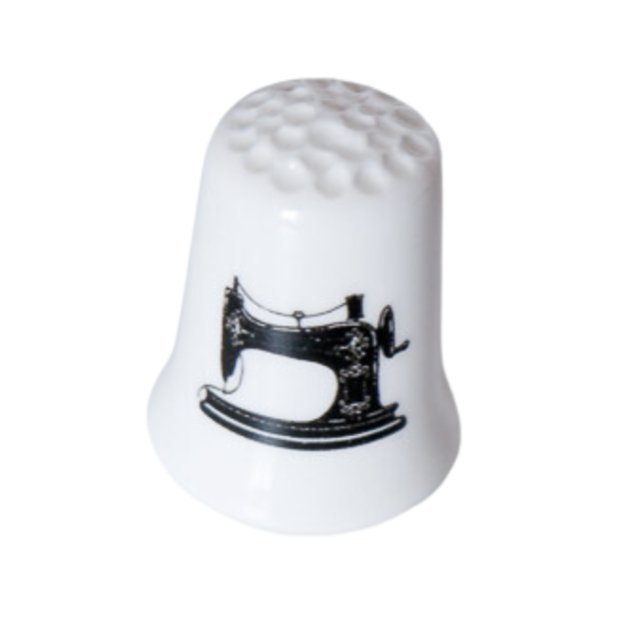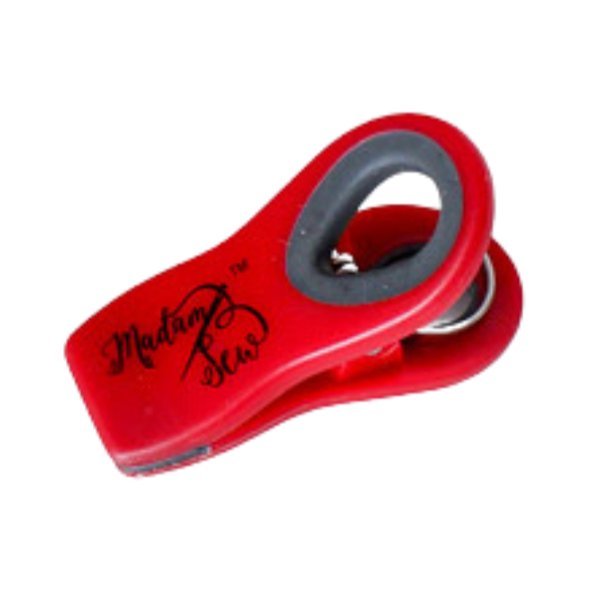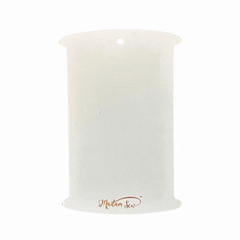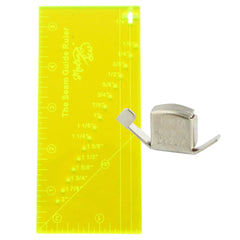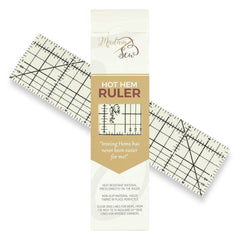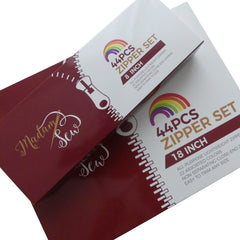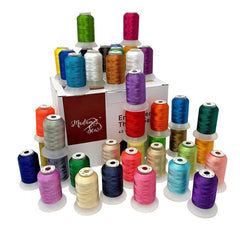Make a Cute and Handy Dog Poop Bag Holder
This poop bag holder is a little boxed bag with a zipper, an opening for handy bag access, and a loop to attach it to your dog’s leash, trousers, purse or key chain. The standard poop bag rolls fit this pouch amply and there is some space left for your keys or some little treats for the dog. It’s a great beginner sewing project that can be completed in under an hour.
If you’re a dog owner who loves to sew, this quick and easy DIY project is the perfect way to combine both passions. A homemade dog poop bag holder is a fun sewing project and a practical accessory for daily walks. If you don’t have a dog, know that it is a thoughtful gift for a dog lover. Maybe you're looking to use up fabric scraps, or donate handmade items to your local animal shelter.
In this tutorial, I’ll guide you step-by-step through the process of sewing your own dog poop bag dispenser. Let’s get started!
Fabric Needs
-
- Two rectangles of 5 ½ inches by 4 ¾ inches
- Four rectangles of 5 ½ inches by 2 ⅜ inches
- One little rectangle of 2 inches by 2 ½ inches
You can buy new fabric, use some leftovers from other projects, or upcycle some other material. Cotton works perfectly but waterproof fabric is also a good idea for these. Use fabric from an umbrella, a tent, an old raincoat or a sail. I made two bag holders and used a thin vinyl from an old table cloth (white-red-orange fabric) and a synthetic sturdy yellow fabric from an old beach windscreen.
Notions Needs
-
- Matching thread
- A small zipper (at least 5 inches long)
- A swivel hook
- Fusible interfacing to reinforce lightweight fabrics
The zippers I use are 8 inches long because I have a whole stack of Madam Sew zippers. Having one of these sets in multiple colors at hand is so convenient. You can cut any zipper to size easily.
Did you know that we sell cotton thread at Madam Sew? We are very proud of the quality of this thread and are gradually adding more and more colors to the catalogue.
Sewing Tools
- Your regular sewing tools: a sewing machine, iron and ironing surface, scissors, pins or clips, a fine fabric marker, a ruler
- A zipper presser foot so you can sew close to the zipper coil on the zipper tab
- Pinking shears to finish edges of the lining
Step-by-Step Instructions
1. Fabric Pieces
You will have to cut the fabric pieces to size as described above, mark the cutouts and cut to get the shapes you need for this project
First, you need to cut:
- The two larger pieces for the back with the opening - A - 5 ½ inches by 4 ¾ inches
- The four smaller pieces for the front with the zipper - B - 5 ½ inches by 2 ⅜ inches
- The tiny piece for the loop - 2 inches by 2 ½ inches
If you are using lightweight materials like cotton, apply fusible interfacing to all fabric pieces before you take the next steps.
Then, mark four 1-inch squares in each corner of the two larger pieces (A) and two 1-inch squares in the two bottom corners of the four smaller fabric pieces (B) as shown in the picture below.
Cut out all the marked squares with fabric scissors. This is what you should have now.
2. Tab
Fold the little fabric piece for the tab in half and fold the two long edges inward. You can make it wider or thinner by folding more or less edge inward. My loop had to be rather thin to match the swivel hook I got.
Stitch the tab closed with a topstitching on both edges.
Run the tab through the swivel.
3. Zippered Front Side of the Pouch
Next I’m installing the zipper using the four smaller fabric pieces (B).
Open the zipper. If your zipper is long, position your fabric pieces in the middle of the zipper. Pin two B- pieces on each side of one zipper tape, right sides facing. This means that you need to pin the long end (the one without the cut-outs) to the zipper on the wrong side (the right side is facing the zipper). The sandwich consists of one fabric layer, a zipper, one fabric layer.
Sew these layers together by sewing close to the zipper coil with a zipper foot.
Repeat the same thing with the other zipper tab. Make sure you start at the same spot on the zipper coil
Press the seams flat against the zipper tape and topstitch through all five layers (two fabric layers, two seam allowances and the zipper tape) on both zipper coils. You can use a seam roller to press when working with vinyl and a plastic zipper.
4. Swivel Hook & Tab
Pin the swivel hook plus tab on the right side, aligned with the fabric’s edge. Baste stitch in place.
5. Back Side of the Pouch
Fold the larger fabric pieces in half (the fold is in the 4 ¾ inch side as shown in the picture below) and press with a hot iron or a cold pressing tool. Mark the center of the fold. On the fold line, mark half an inch from the center on both sides. From one mark to the other, you have 1 inch. This is the opening through which the bags will be dispensed.
Place both fabric pieces on top of each other, right sides facing each other. Stitch on the fold line from one fabric’s edge until the mark and backstitch to secure the threads. Then repeat for the other side. The part in between the two rows of stitching is the one-inch opening that will be used for easy access to the poop bags. If you look closely, you can see the yellow stitches in the image below. I should have used another color, I know.
Fold the wrong side of each of the fabric pieces towards each other and press the seam you’ve just sewn. Again, I used a rolling seam presser to press vinyl seams. If you are working with cotton, a good press with your iron is what is advised here.
6. Assemble the Bag
Open the zipper so the teeth are in the middle of the bag. Place the two sewn pieces of the bag (back and front) on top of each other, right sides together. Pin or clip together.
Sew the four longer straight sides (top, bottom and sides). Don’t sew the cut-out corners just yet. Finish the edges of these seams. I just used my pinking shears.
Now cut the zipper tape and the part of the tab that sticks out.
The four corners are not to be sewn together flat, like you’ve just sewn the 4 seams. You have to pinch the corners together perpendicular to the side seams. To do so you pull the corners away from the side seam and pinch them flat so you have four flat seams that you can pin and sew.
Once you’ve sewn these four corners, your sewing work for this project is done. Clip the threads and finish the edges of the seams with pinking shears or your preferred method.
Turn the bag right side out through the zipper opening and that’s it. This bag from an old table cloth is ready for use.
Insert the roll of poop bags, pull the first bag through the 1 inch opening, attach the bag to the leash or any other bag that you take on your walks, and you are ready for a walk in style! The bag below was made out of an old beach wind shield.
To Conclude
Now that you know how to create your own DIY dog poop bag holder, why not keep the sewing momentum going? You can sew a matching dog leash using fabric scraps. The Madam Sew wristlet bag that I made some time ago can hold little treats for the dog or your house keys and a couple of dollars. Another great project is the water bottle holder. It can also be attached to any bag or leash so you have your own or your dog’s water bottle with you. All three projects are beginner-friendly and great for everyday outings.
Happy sewing, and don’t forget to share your creations with us!
An
Blogging for Madam Sew









